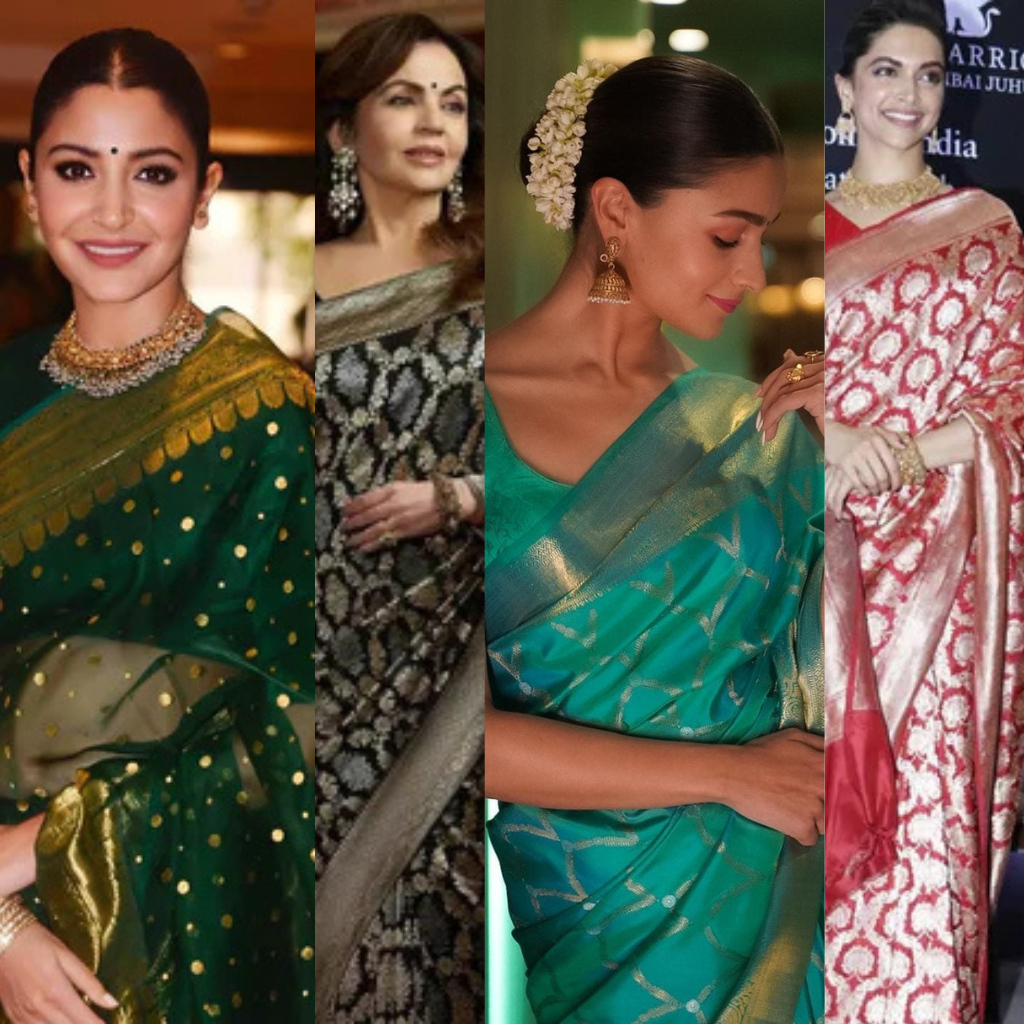Indian sarees are not just garments, they are woven traditions, cultural stories, and timeless heirlooms passed down through generations. From weddings to festivals, and even as elegant daily wear, sarees have always been the pride of Indian women.
While fashion evolves, the saree remains an unshakable symbol of elegance. India is home to hundreds of weaving traditions, but some iconic saree styles have truly stood the test of time. Today, sarees are celebrated not only for their heritage value but also for their versatility, with contemporary women draping them for both traditional functions and modern-day events.
Here are four timeless saree styles you should know about.
Banarasi Sarees from Varanasi
are among the most celebrated sarees of India, admired for their regal look, intricate zari work, and fine silk base. They are often considered the ultimate bridal saree, with origins dating back to the Mughal era. Crafted with luxurious gold and silver brocades, Mughal-inspired motifs, and detailed floral designs, Banarasi sarees are ideal for weddings, festive occasions, and bridal trousseaus. Passed down as heirlooms, they are often treasured for generations. Today, lighter Banarasi sarees in pastel tones are trending among younger brides, making owning one feel like owning a piece of Indian history.

Cotton and Mulmul Sarees
combine comfort and elegance. For everyday wear, nothing comes close to the softness of mulmul cotton sarees. Lightweight, breathable, and versatile, these sarees are perfect for India’s tropical climate and daily use. Made from fine cotton threads, mulmul sarees are soft, airy, and often adorned with hand block prints or delicate embroidery. They are ideal for daily wear, office attire, and casual gatherings. Once known as “woven wind,” mulmul was prized by royals for its comfort. Today, pairing cotton sarees with crop tops, belts, or jackets has become a growing trend among millennials. At Kaajal Sarees, mulmul cotton sarees remain one of the most loved collections by resellers, wholesalers, and women across India.
Kanjeevaram Sarees from Tamil Nadu
are timeless South Indian treasures synonymous with grandeur. Known for their durability and heavy silk weave, Kanjeevaram sarees are considered among the finest in the world. Woven with pure mulberry silk and real zari, they often feature temple borders, checks, stripes, and floral patterns. They are worn during weddings, festive rituals, and traditional ceremonies, and are seen as auspicious bridal sarees. Designers today are experimenting with lighter silk variants and unconventional color combinations to appeal to younger generations. A Kanjeevaram saree is not just attire, it’s an emotion for every South Indian bride.
Chanderi Sarees from Madhya Pradesh
combine lightness with luxury, making them a preferred choice for women who seek elegance without the weight of heavy silks. Known for their sheer texture, lightweight fabric, and glossy transparency, Chanderi sarees are perfect for office wear, festive gatherings, and semi-formal events. Often referred to as the “woven air” of India, Chanderi sarees were once a favorite of queens and aristocrats. Today, contemporary designers are blending Chanderi with prints, pastel tones, and fusion drapes to make them more versatile, the perfect blend of tradition and minimalism.
From Banarasi silks to cotton mulmul sarees, the diversity of Indian sarees reflects the country’s heritage, artistry, and evolving fashion sensibilities. Each region tells its story through these six yards of fabric, whether it’s the temple borders of Tamil Nadu, the zari of Varanasi, or the softness of Bengal’s mulmul cotton.
At Kaajal Sarees, we celebrate this legacy by staying rooted in tradition while embracing contemporary trends. Whether you are a bride, a saree reseller, or simply a lover of Indian weaves, sarees continue to be timeless investments in beauty and culture.

